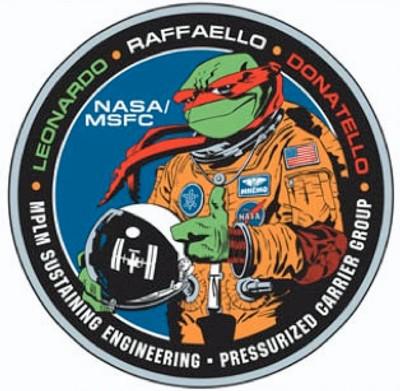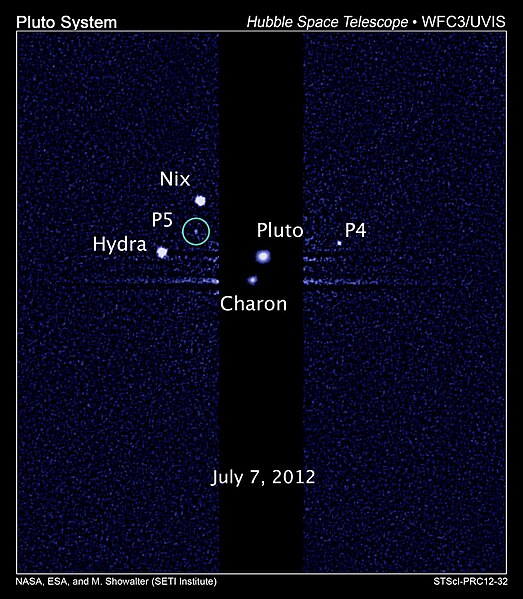Post is going up a tad early this week, as I have a meeting at noon. This week, we once again return to the unmanned side of things, for trip way, way out there as we revisit the expanded Voyager program of this timeline.
Eyes Turned Skyward, Part II: Post #5
The gas giants have long been bounteous sources of wonder and mystery for scientists, all the way back to Galileo's discovery of the four moons which bear his name orbiting Jupiter. As space launch became practical in the 1950s and 1960s, naturally thought turned, as with the terrestrial planets, to not just exploring them at a distance with a telescope, but to physically exploring them, sending emissaries, whether crewed or robotic, to physically explore these bodies, their surroundings, and their moons, and discover those things which could not be discovered from Earth. Fortunately for proponents of outer planet exploration, the 1960s saw not just the development of bigger and more powerful rockets than ever before, but also the discovery of gravitational assist, a technique which vastly increased the ease of reaching the giant planets. A simple flyby of Jupiter could send a probe speeding on to Saturn, reaching that world more quickly and with less effort (meaning a smaller, lower-cost launch vehicle) than was possible with even the best direct trajectories. Furthermore, as it emerged, a unique opportunity was present in the next decade; the possibility of launching a few probes to explore all the gas giants and tiny, distant, and strange Pluto far more quickly and easily than attempting to launch probes to each planet separately. The result was the Voyager program.
Major improvements on the preceding Pioneers, the Voyagers were at first just two probes designed to salvage the TOPS program, an ambitious effort by NASA to explore all the outer planets with a standard probe bus design (one which might later be adapted to other missions, such as giant planet orbiter or atmospheric probe deployment bus). Unfortunately for JPL, budget pressures linked to the development of Skylab/Spacelab, Block III Apollo, the Saturn IC, AARDvark, and the general budget drawdown in the wake of the Moon landings led to TOPS being canceled, the final blow being an effort by astronomers to ensure the survival of what would later be known as the Hubble Space Telescope. JPL quickly recovered with Voyager, billed as being 90% of TOPS science at 50% of the cost. As development neared completion on the major human space flight projects of the decade and budgets finally stabilized, JPL struck back at the demise of TOPS by convincing NASA and Congress to approve the Mariner Jupiter-Uranus mission, quickly rebilled Voyager-Uranus once the Voyager name itself had been adopted in early 1977. Launched in 1979, two years after the Mariner Jupiter-Saturn probes, officially these two probes were merely intended to explore Jupiter itself thus extending previous observations of Jupiter (critical for exploring how Jupiter's atmosphere changes over time, for instance), then proceed on to Uranus. However, it was not much of a secret that, as with their Jupiter-Saturn siblings, these probes were intended to fulfill the full Grand Tour mission, thereby exploring all four giant planets and Pluto.
Development of the Voyagers proceeded smoothly, albeit with increasingly large required budgets, through the first launches in late August and early September 1977. While Voyagers 1 and 2 encountered a number of issues, problems, and complications during and shortly after their launch, these all proved to be relatively minor and easily correctable, leading to some last-minute modifications to the two Voyager-Uranus probes then under construction. Otherwise, their cruise to Jupiter proved uneventful, with only a few interplanetary physics experiments and engineering tests of upgrades to the Deep Space Network needed to maximize scientific return from the missions breaking the monotony of the voyage. Finally, in early March 1979 Voyager 1 sped by the planet, greatly advancing the state of the art of Jovian science in the process. Among many other discoveries, such as the irregularity of Jupiter's atmosphere at the small scale, Voyager 1's flyby is particularly notable for dramatically confirming Io's vulcanism, already suspected from the moon's bizarre appearance and apparently fresh surface, in a navigation image taken a few days after its closest approach. During its flyby, Voyager 1 successfully "hit" the gravitational assist window, with Jupiter speeding the probe on towards Saturn and out of the Solar System altogether. As Voyager 1's encounter drew to a close with post-flyby observations of Jupiter during the rest of March, attention turned towards Voyager 2, closing in on the planet for a May flyby opportunity. While this did not allow such a good Jovian moon "tour" as had been afforded Voyager 1, nevertheless Voyager 2 was able to make a relatively close encounter with Europa, and more distant flybys of the other Galilean moons. Fortunately, Voyager 2 lived up to the standard set by its predecessor, and returned a remarkable amount of scientific data on not only Jupiter's moons but also Jupiter itself. Like Voyager 1, it successfully completed the gravity assist maneuver, proceeding on to Saturn for its next flyby.
Meanwhile on Earth, the Voyager-Uranus probes were undergoing assembly and testing prior to being moved to the launch site at Cape Canaveral for their October-November launch date. Using data from their older siblings currently in space, both had been upgraded, redesigned, and generally made even better than the originals. The most notable event of their launch was the first of NASA's anti-nuclear protests. While many previous satellites and probes, including Voyagers 1 and 2, had been launched with nuclear material onboard with little comment from either nearby Floridians or the wider US, the Three Mile Island accident earlier in the year had caused a large portion of the population to regard anything "nuclear" with fear and trepidation. Several dozen Floridians, together with a smaller number of out-of-staters, decided that the use of nuclear materials by the space program was worthy of protest, and converged on Cape Canaveral's gates beginning a few weeks before launch. Despite explanations by NASA public relations officials of both the necessity and safety of the RTGs used by the Voyagers, they continued their protest until launch, with a few being arrested attempting to cross the fence and physically prevent the launch of the probes. While rather minor overall, this incident did serve to underscore the movement away from the technological optimism of the 1950s and 1960s to the pessimism of the 1970s. As with their siblings, the initial cruise through interplanetary space proved uneventful, with the main scientific observations relating to the effects of the ongoing and unexpectedly intense solar maximum on interplanetary space through the asteroid belt.
By the beginning of the year, attention had turned to the first two Voyagers, then starting some work on their Saturn flyby opportunity. In November 1980 Voyager 1 finally reached the Saturn system. In addition to its observations of the planet itself and some of the other moons, it passed less than 10,000 km from Titan, revealing that the giant moon possessed a thick atmosphere, laced with virtually opaque hydrocarbon haze, although this flyby prevented it from continuing on to Pluto. Following this simultaneously exciting and disappointing discovery, talk of diverting Voyager 2 to do another close flyby of the moon almost immediately vanished, and instead it threaded the needle to continue on to Pluto during its flyby in March of the next year. Voyager 2 largely furthered the observations its sibling probe had conducted the previous year, returning additional scientific data about Saturn's winds, Titan's outer atmosphere, and many of Saturn's moons. Among the most well-known discoveries of the two probes was the presence of a large crater later named Herschel on the moon Mimas, making it appear similar to the Death Star of 1977's Star Wars.
However, by the time Voyager 2 wrapped up its post-Saturn flyby activities, attention was already turning towards Voyager 3, then approaching Jupiter for a June flyby, as the probe and its August followup Voyager 4 were perfectly positioned to take advantage of the discoveries made by their older counterparts. The orbital geometry of Jupiter and its moons during the 1981 flyby opportunities would allow extremely close flybys of Io and Europa, two of the most interesting moons of the system following the discoveries of Voyagers 1 and 2. With the Jupiter orbiter Galileo already well along in development, characterizing these objects and their environment was of great importance both scientifically and in mission planning. The Voyagers did not disappoint, returning stunning close-up images of the moons that greatly furthered the state of Io and Europa science. Io observations in particular allowed estimations of long-term volcanic activity on the moon, by comparing surface features found by Voyager 3 with those found by Voyagers 1 and 2, while Europa observations, combined with the obvious presence of significant tidal heating on its neighboring moon, led to the hypothesis that there might exist a liquid water ocean under the icy crust of the body. With the recent discovery of life dwelling around oceanic vents, never seeing sunlight and often not requiring oxygen, there were even a few suggestions, most notably by Carl Sagan, that there might somehow exist life on the moon, although most researchers, and certainly NASA after Viking, simply ignored the idea in public. Still, the ocean alone was interesting enough to start scientists considering a follow-up to Galileo dedicated primarily to Europa science, although as of yet such a probe was merely conceptual and of a low development priority.
With September came the first time since 1979 when no Voyager encounters were planned for the following year, as Voyager 4 wrapped up its observations of Jupiter. With Voyager 3 not reaching Uranus until 1986, a long period of digestion was in store for planetary scientists wrapped up in the questions raised by data from the Jupiter and Saturn flybys and preparing for the launch of Galileo in 1983. Heliophysicists and astronomers, however, seized the opportunity to take advantage of the unique vantage point offered by the Voyagers, especially Voyager 1, which would have no future planetary encounters at all. As some of the first probes to reach trans-Saturnian space, the Voyagers provided a great deal of information about this distant region of our own solar system, in the process disproving the hypothesis sometimes advanced in the 1970s that the heliopause might lie somewhere interior to Neptune, or perhaps Uranus or even Saturn. Additionally, the down period allowed the development of a number of software upgrades for the probes' computer systems, designed to maximize the data return from their future flybys (or, in the case of Voyager 1, maximize its future useful life). However, in general the five year period of downtime between Voyager 4's flyby of Jupiter and Voyager 3's flyby of Uranus was uneventful and quiet, with events closer to home stealing the spotlight from the little robots that could.

